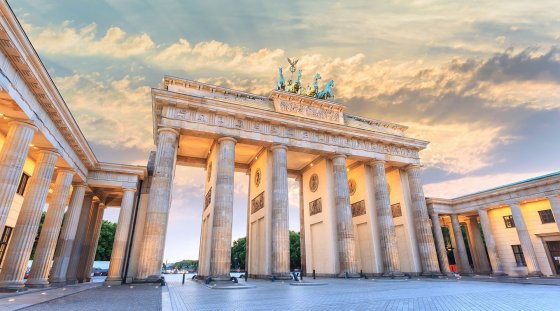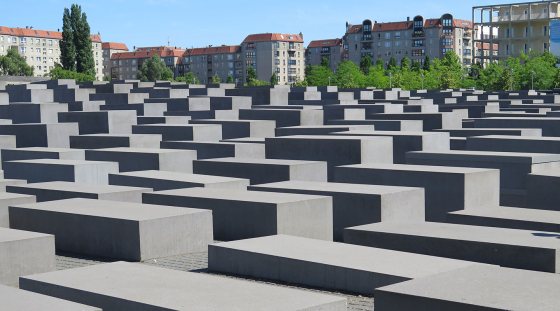
01 | The Brandenburg Gate: the city's most iconic landmark tells us a lot about Berlin's history. As Berlin's only remaining city gate, for decades it symbolised the separation between the city's east and west. When the Berlin Wall was constructed in 1961, the Brandenburg Gate was in the exclusion zone and wasn't accessible to the people of Berlin or tourists. Today, the gate, which was built at the end of the 18th century, is one of the most beautiful examples of German classicism, and is now easy to visit and admire. Take the opportunity to stroll across Pariser Platz and along Unter den Linden while you're here.
02 | Very close to the Brandenburg Gate you can find another witness of almost 150 years of Germany's fast-moving history: the Reichstag building. After Sir Norman Foster led renovation works and designed the glass dome in the 90s, and artists Christo and Jeanne-Claude wrapped the building in such a spectacular way in the summer of 1995, the Bundestag (German parliament) has been back holding session in this magnificent building since 1999. If you book in advance you can take a look around the inside of the building, and either join a detailed, guided tour, take part in a plenary session or visit the dome and rooftop terrace.

03 | Without doubt the most beautiful square in Berlin is the Gendarmenmarkt. But is it the most beautiful square north of the Alps, as many claim? You can make up your own mind from one of the many cafés or restaurants on the square, against a unique backdrop of the Konzerthaus and the French and German churches. The Gendarmenmarkt's current name comes from the "gens d'armes" cuirassier regiment, which had stables here until 1773.
04 | One of the most moving sites in Berlin is certainly the Memorial to the Murdered Jews of Europe. Immerse yourself in the spatial structure, made up of 2,711 concrete stelae of various heights, which you can walk through in its entirety: the gentle slope and the uneven ground add to the feeling of disorientation, dizziness and uncertainty evoked by the route through the stelae that tower over you at a height of up to 4.7 m. In this way, the Holocaust Memorial manages to confront the holocaust without having a central point of remembrance. The space is always open and also has an underground information centre where you can learn more about the victims and locations in themed spaces.
05 | As we're already discovering so much about Berlin's history...a visit to Berlin wouldn't be complete without seeing the remnants of the Berlin Wall. Today there isn't much left to be seen of the approximately 170-kilometre-long and between 30 and 500-metre-wide wall that divided the city, but there are several places where you can still see parts of the distinctive structure. The last three remaining sections of the border wall (the west-facing, frontmost blockade) can still be found in their original locations in the Mitte district of the city: on Bernauer Straße, on Niederkirchnerstraße (at the Topography of Terror exhibition) and on Liesenstraße. However, the better-known East Side Gallery between Ostbahnhof station and the Oberbaum bridge is the longest remaining section of the hinterland wall (which closed off the border on the East Berlin side): straight after the wall fell, the 1.3 km open-air gallery immortalised around 120 international artists, whose paintings are now amongst the most photographed subjects in the capital.
TOP TIP - Berlin is an incredibly sprawling city, which means that it can take a lot of time and energy to get between different attractions on foot. The best advice we can give you is to travel by public transport (U-Bahn underground, S-Bahn train or bus). And if it's your first time in Berlin, don't hesitate to get to know the city with a tour on a hop-on, hop-off sightseeing bus ;-)












